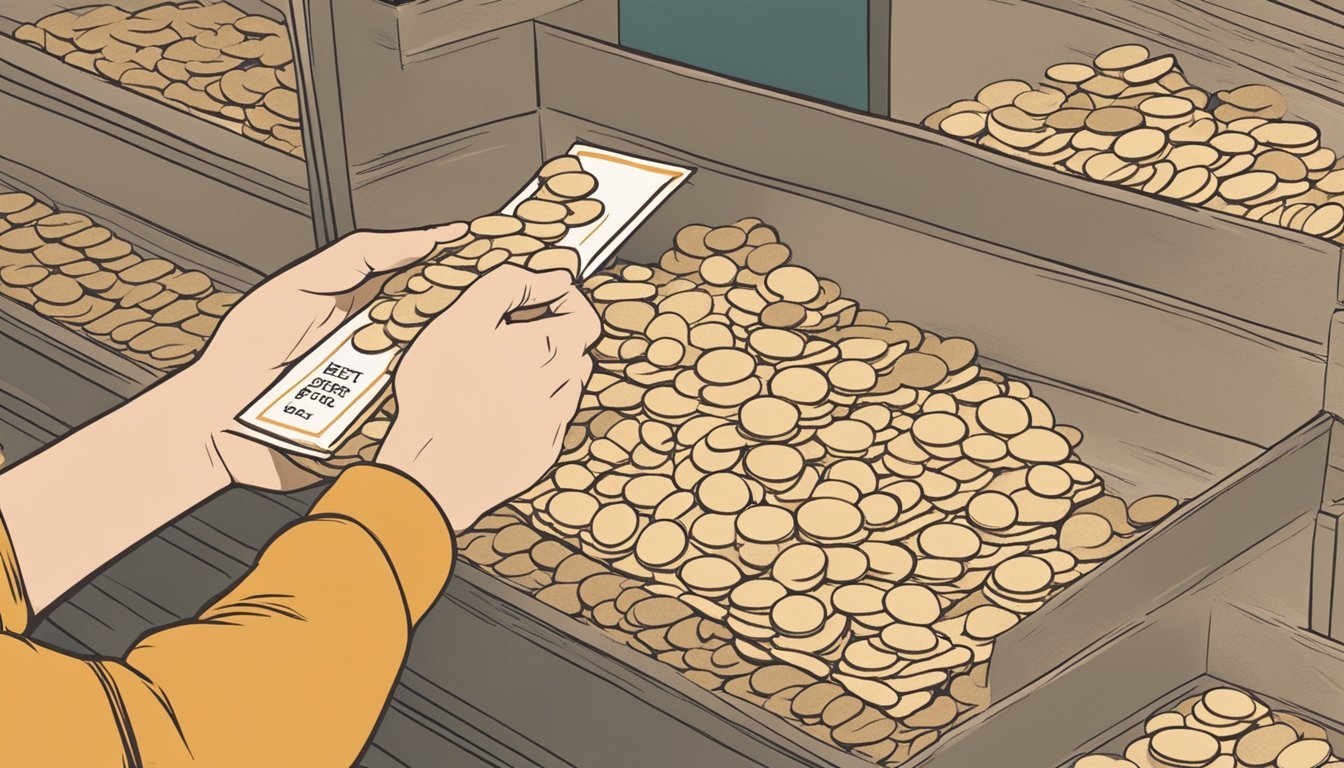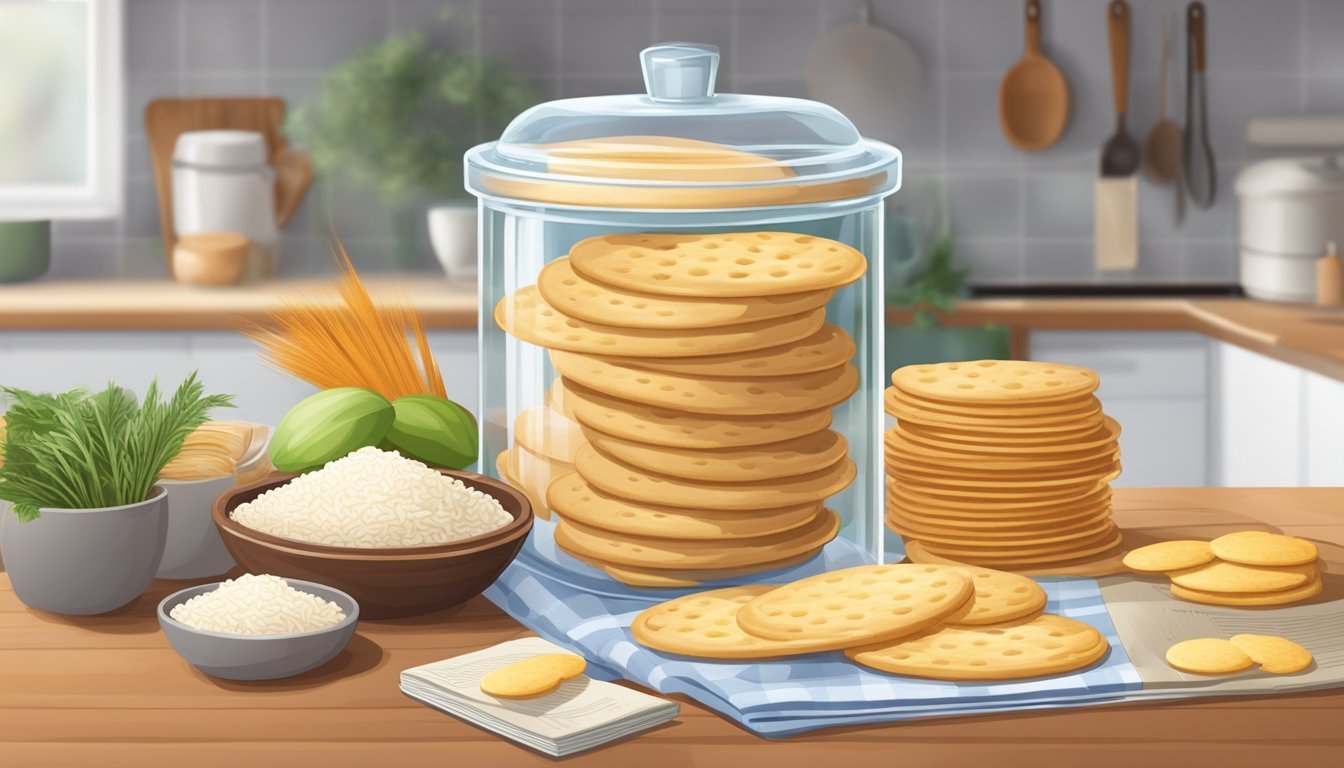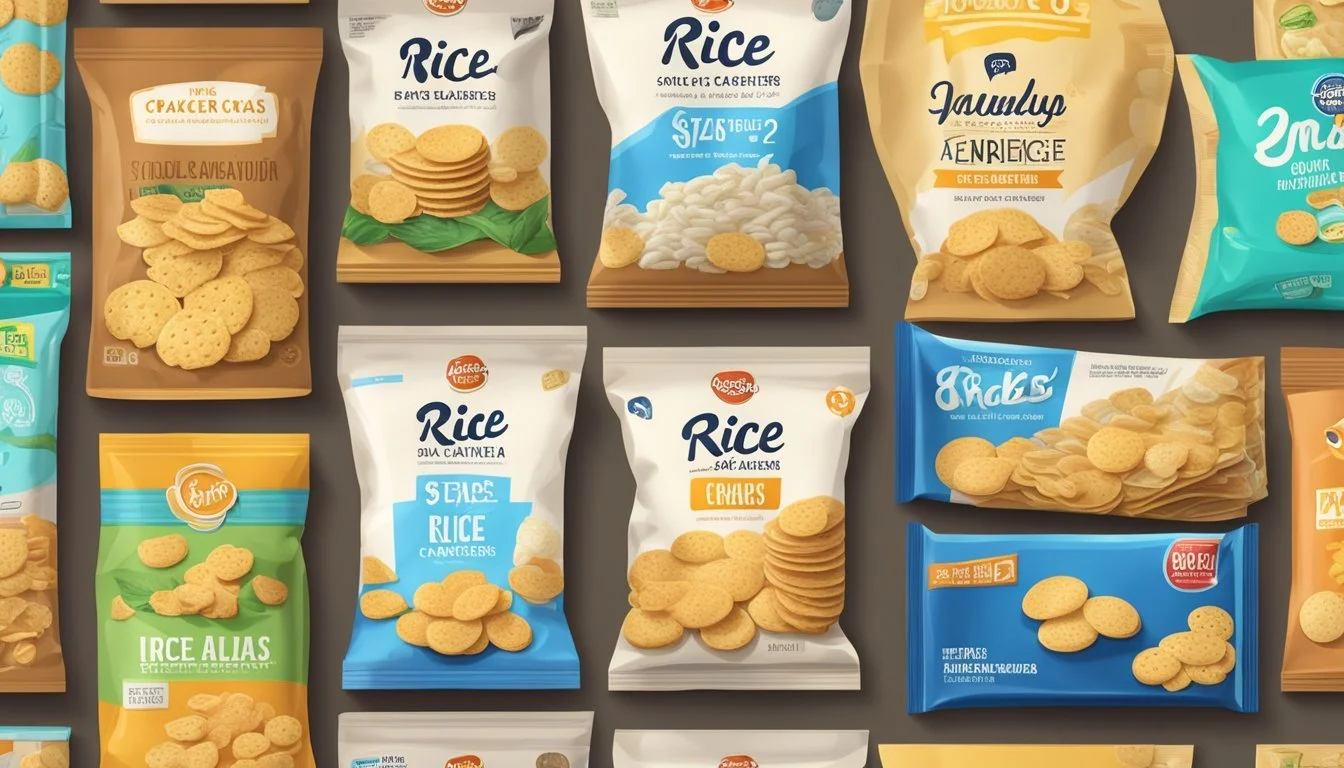How Long Do Rice Crackers Last?
Shelf Life and Storage Tips
Rice crackers are a popular snack known for their crispy texture and range of flavors. Their shelf life can vary depending on several factors, including whether the package is opened or unopened, and the conditions under which they are stored. Generally, an unopened package of rice crackers maintains its best quality for 1 to 2 months after opening if stored in a cool, dry place. If the package remains unopened, the crackers can typically retain their quality for 6 to 9 months from the packaging date.
Preserving the texture and flavor of rice crackers is key for enjoyment. Once a package is opened, exposure to air and moisture can compromise the crispiness and taste of the snack. To maximize the shelf life of opened rice crackers, it's advisable to keep them in an airtight container or reseal the package tightly with a clip. Storing them in a pantry away from heat sources and moisture can help maintain freshness.
Conversely, rice crackers past their expiration date are not necessarily harmful to eat but there might be a noticeable decline in texture and flavor. It’s important to check for any signs of spoilage or staleness before consuming them beyond their best-by dates. In cases where the crackers have been repackaged effectively against moisture and air, they can last significantly longer than indicated by the best-by date.
Composition and Types of Rice Crackers
Rice crackers are a diverse group of snacks that vary in their composition and are available in multiple forms. The primary components and the variety of rice crackers offered on the market cater to a wide range of tastes and preferences.
Ingredients in Rice Crackers
Rice crackers, as implied by their name, primarily consist of rice. The rice used might be white rice, brown rice, glutinous rice, or a mixture of rice flours. Key ingredients typically include:
Rice or rice flour: The foundational ingredient providing the base and texture.
Salt: Enhances flavor and acts as a preservative.
Oil: Often used in the cooking process to achieve crispiness.
Sugar: Sometimes added for a slight sweetness.
Water: Necessary for the dough or batter formation.
Some rice crackers may include additional ingredients such as flour for a different texture, nuts for crunch, and spices for flavor diversity. It is crucial to note that each ingredient is used in specific amounts to create the desired taste and texture.
Varieties of Rice Crackers
The variety of rice crackers ranges from simple salted versions to those flavored with complex spice mixes or additional components. Here are some common types:
Senbei: Originating from Japan, these crackers are often grilled or baked and can be soy-flavored, wrapped in seaweed, or brushed with sweet soy glaze.
Arare: These are small, bite-sized Japanese crackers made from glutinous rice and flavored with soy sauce.
Water crackers: A simpler form, these are made with white rice flour (how long does white rice flour last?), water, and salt, known for their mild flavor and crispness.
Each type of rice cracker offers a distinct texture and flavor profile, from the light and airy to the thick and savory, meeting various consumer preferences.
Determining Freshness and Quality
When assessing the freshness and quality of rice crackers, one should closely examine expiration dates and be vigilant about signs of spoilage which affect flavor and texture.
Understanding Expiration Dates
The best-by date on rice crackers packaging is intended to indicate the period within which they are expected to retain peak quality. It is commonly set between 6 to 9 months from the packaging date. However, it's important to note that these crackers can remain safe to consume after the best-by date, provided they have been stored correctly.
Identifying Signs of Spoilage
Signs that rice crackers are no longer at their best include:
Flavor: A change in flavor is often the first indicator; crackers may taste bland or stale.
Color: Any noticeable color changes could be a sign of staleness or potential spoilage.
Odor: Rice crackers should have a neutral scent. A sour or off-putting odor is an indication that they should be discarded.
Texture: Fresh rice crackers have a crisp texture. If they feel soft or chewy, they have likely become stale.
Mold: Visible mold is a definitive sign of spoilage, and the crackers should be thrown away.
If rice crackers display any signs of spoilage, they should not be consumed to avoid potential health risks.
Storage Techniques and Practices
To ensure maximum freshness and to extend the shelf life of rice crackers, proper storage techniques and practices are critical. This section will explore the ideal conditions for storing rice crackers and the effects of temperature and humidity.
Ideal Storage Conditions
Rice crackers maintain their quality best in cool, dry places away from direct sunlight. Manufacturers typically recommend storing them in airtight containers after opening to protect against moisture and air exposure. Pantry shelves or kitchen cabinets away from heat sources provide an appropriate environment for long-term storage.
Packaging: Keep rice crackers in their original packaging until ready to use.
Airtight Containers: Transfer crackers to airtight containers if the original packaging is not resealable.
The key is to minimize the presence of air and moisture which can compromise the texture and lead to staleness.
Effects of Temperature and Humidity
The longevity of rice crackers can be affected by temperature and humidity levels:
Factor Impact on Rice Crackers High Temperature Accelerates staleness and potential for mold growth. High Humidity Increases moisture content, leading to sogginess and mold.
It is essential to store rice crackers in an environment with stable temperature and low humidity to prevent them from becoming rancid or growing mold. Such conditions ensure the rice crackers stay crisp and fresh for the expected shelf life of 6 to 9 months.
Preserving Rice Crackers Over Time
Proper storage techniques and the use of preservatives can greatly influence the shelf life and quality of rice crackers. This section will explore effective methods homeowners can apply to extend the life of their rice crackers and how commercial packaging technologies aid in preservation.
Extending Shelf Life at Home
For individuals looking to maintain the best quality of their homemade or commercially packaged rice crackers, one can employ several storage strategies. Firstly, storing rice crackers in a cool, dry place such as a pantry or cupboard is fundamental. The use of airtight containers, like mason jars or vacuum-sealed jars, provides defense against moisture and other contaminants. Additionally, mylar bags with oxygen absorbers can prevent oxidation, further extending freshness. For an opened package of rice crackers, resealing the bag tightly or transferring the crackers to a sealed container can keep them at their best quality for about 1 to 2 months.
Best Practices at Home:
Store in a cool, dry place
Use airtight containers or jars
Transfer to mylar bags with oxygen absorbers
Keep opened packages sealed tightly
Using Preservatives and Packaging
Manufacturers often incorporate preservatives into commercially packaged rice crackers to extend their shelf life. These substances help in preventing rancidity and spoilage, allowing the crackers to remain consumable for 6-9 months from the packaging date. In the commercial sphere, rice crackers are typically sealed in packaging that mitigates exposure to air and humidity—two factors that can accelerate staleness. Long-term storage options such as buckets with airtight lids, specifically designed for food preservation, are commonly used in the industry to ensure crackers retain their crispness over extended periods.
Commercial Strategies:
Incorporate preservatives to combat spoilage
Utilize specialized packaging to prevent air and humidity exposure
Employ mylar bags and buckets with airtight lids for bulk storage
Safety Concerns and Considerations
When discussing the shelf life of rice crackers, it is essential to consider the potential for bacterial and mold growth which can compromise food safety, as well as strategies to prevent foodborne illnesses.
Potential for Bacteria and Mold Growth
Rice crackers are dry and not typically associated with bacterial growth like botulism; however, if they're exposed to moisture or not stored properly, there is a risk for mold development. Mold can be visible as fuzzy spots of various colors or can present as a musty odor. Once mold or signs of spoilage are detected, the rice crackers should be discarded to ensure safety.
Preventing Foodborne Illnesses
To minimize the risk of foodborne illnesses and ensure the safety of rice crackers:
Always store rice crackers in a cool, dry place.
After opening, keep rice crackers in an airtight container to protect against moisture and contaminants.
Consider vacuum sealing to extend freshness and protect against bacteria and mold.
Use rice crackers before the best-by date for optimal quality.
Refrigeration is generally not necessary, but in very humid environments, it may help to prolong shelf life.
By adhering to these storage guidelines, consumers can help maintain the quality of their rice crackers and prevent foodborne illnesses.
Enjoying Rice Crackers in Your Diet
Incorporating rice crackers into one's diet offers a balance of convenience and versatility. This section will explore how rice crackers can be a healthy snacking option and provide creative ways to serve them.
Healthy Snacking Options
Rice crackers, often part of the Japanese snack category, present a savory alternative to traditional snacks like saltines and pretzels. They are typically low in calories and sugar, making them a suitable option for those monitoring their weight. With about 83 grams of carbohydrates per 100-gram serving, rice crackers can fit into the diet when consumed in moderation. Here’s a comparative breakdown of snacking choices:
Snack Item Calories per 100g Carbohydrates Sugar Rice Crackers 390 83g <1g Saltines 418 74g 1.3g Pretzels 380 80g 3.3g
For those seeking to add more flavor without excessive calories, rice crackers can be enjoyed with a variety of healthy toppings:
Soy sauce: a small drizzle adds a rich, umami flavor
Nut butters: provide a creamy texture and a good source of protein and healthy fats
Salmon or tuna (What wine goes well with tuna?): offer high-quality protein and omega-3 fatty acids
Creative Serving Ideas
Rice crackers serve as a versatile base for a myriad of serving suggestions. They can be paired with both savory and sweet ingredients for a satisfying snack. Here are some ideas to enhance rice crackers:
Japanese-style: Top with wasabi and a slice of pickled ginger for a quick sushi-inspired snack.
Cheese plate: Complement with various cheeses and dried fruits, offering a neat contrast to the crackers' crispness.
Mini sandwiches: Use two crackers to sandwich slices of cucumber, cheese, and smoked salmon or tuna for a mini treat.
By being mindful of portion sizes and choosing wholesome toppings, individuals can enjoy rice crackers as a part of a balanced diet.
Home Baking and Recipes
Home baking allows for customization of rice crackers, enabling the creation of a variety of flavors and textures. Baking rice crackers from scratch ensures a freshness and crispness that store-bought options may lack.
Step-by-Step Baking Instructions
Preparation: One should preheat their oven to the specified temperature, usually between 325°F and 360°F (160°C – 180°C), ensuring it's fully heated before baking.
Dough: To make the dough, cooked rice (how long does cooked rice last?) is processed with ingredients like olive oil and salt. One may need to add a little water to achieve a dough-like consistency.
Baking: The crackers are then baked on a lined tray until they reach a desired crispy texture. Total cooking time may range from 20 to 25 minutes, depending on thickness.
Innovative Cracker Recipes
Flavor Variations: One can add a variety of spices such as chili powder or cinnamon to the dough for a unique twist. Vanilla can be added for a subtle, sweet flavor.
Toppings: Before baking, one might choose to sprinkle chocolate shavings, a dusting of cinnamon, or a pinch of sea salt atop the dough balls for added texture and taste.
Texture Enhancers: For an extra crunch, some recipes suggest incorporating baking soda into the dough mixture.
Complementary Food and Pairings
Rice crackers offer a versatile canvas for a variety of toppings and are best enjoyed when complemented with compatible foods and beverages. Choosing the right pairings can elevate the flavor and turn rice crackers into an appealing snack or party food option.
Dips and Spreads
Dips and spreads can significantly enhance the flavor of rice crackers. Nut butters, such as peanut or almond butter, are a classic choice, providing a creamy texture and rich taste. For a healthier option, one might opt for spreads that are lower in sugar and rich in protein. Hummus, a spread made from mashed chickpeas, offers a savory alternative that pairs well with the mild taste of rice crackers. Here's a brief list of popular options:
Cream cheese: Provides a smooth and tangy flavor.
Guacamole: Offers a fresh taste with creamy avocado.
Tapenade: Delivers an intense, savory olive flavor.
Beverages and Meals That Pair Well
Selecting the right beverage or meal to accompany rice crackers can round out the eating experience. Tea, whether black or green, is a common beverage choice that balances the dry texture of rice crackers with its soothing warmth. For a more substantial meal, rice crackers can be served alongside soup; the crispiness adds a delightful contrast to the smoothness of soups like tomato or chicken broth. One can consider the following pairings:
Salmon or tuna: These fish are rich in flavor and omega-3 fatty acids, making them a satisfying complement to the lightness of rice crackers.
Cereal: Including rice crackers in a trail mix with cereal and popcorn offers a crunchy texture variety.
Vinegar: A dash of balsamic or apple cider vinegar on rice crackers adds a zesty kick that can stimulate the palate.
It's important to note that while rice crackers can be enjoyed with a wide array of foods, they are often enjoyed simply with a beverage like tea, which can highlight their subtle flavor without overpowering it.
Conclusion
Rice crackers are a popular snack known for their crunchy texture and variety of flavors. They exhibit an impressive shelf life when stored under ideal conditions.
Unopened rice crackers can retain their freshness from 6 to 9 months after the packaging date. Once open, they are best consumed within 1 to 2 months for optimum taste and texture. To achieve this, one should store rice crackers in a cool, dry place, tightly sealed to guard against moisture and other contaminants.
For a snack that contributes to healthy eating, eating rice crackers within the advised time frames ensures they contribute not just to satisfaction but also to the body's well-being, free from the deterioration in nutritional quality that may accompany stale foods.
To optimize enjoyment of rice crackers, consumers should consider the following storage tips:
Keep the package tightly closed using a clip or a tie.
Store in a pantry or another cool, dry area away from direct sunlight.
Check packaging for any expiration dates as a guideline.
If inadvertently consumed after the advised consumption window, rice crackers are unlikely to be harmful but may lack in flavor and texture. Consumers should exercise discretion and prioritize freshness to enjoy the full benefits of this light snack.










